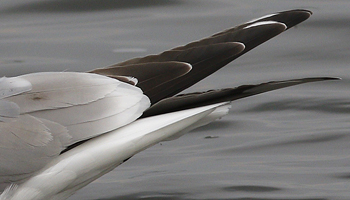 Mew Gull Larus canus canus; heinei; kamtschatschensis; brachyrhynchus
Mew Gull Larus canus canus; heinei; kamtschatschensis; brachyrhynchus
(last update: March 12, 2012)
Mew Gull (Larus canus) 2nd cycle (2CY): September - October
Mew Gull is a widespread species on the northern hemisphere with several sub-species: in N America brachyrhynchus,
in W Europe nominate canus, in W Asia and Russia heinei and in the Far
East sub-species kamtschatschensis.
The American race brachyrhynchus is a breeding bird of
Alaska, the American West coast and inland Canada. After the
breeding season, it disperses south along the coast to California. Brachyrhynchus can be readily told from nominate canus, and therefore
sometimes considered a full species: Mew Gull. The differences can
be found in the bill (in some birds obviously small), but most in
plumage.
Nominate canus is a common breeding bird in North Europe, wintering both in the breeding area and slightly south, to the northern coast of the Mediterranean.
The race heinei breeds from White Russia eastwards to central
Mongolia, in a broad band over the tundra region of inland U.S.S.R.
It can be found wintering in the central Asian states, southern
Black Sea and Caspian Sea and further south to the Persian Gulf.
Part of the eastern population of heinei may follow a more
eastern route to the coast of China.
Race kamtschatschensis breeds in eastern Siberia and, as the
name indicates, Kamtschatcha. In winter it moves southwards along
the coast, wintering in Japan, the Korea's and China. It is the
largest race, almost as large as Herring Gull. The description below largely follows from P.J. Grant: "Gulls, a guide to identification".
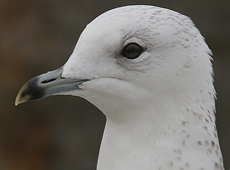 |
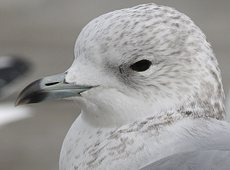 |
 |
| Mew Gull canus 2CY, October 19-23 2016, Grou, the Netherlands (Mars Muusse). 2CY canus often has a bluish tone on the bill. Left bird is extreme in showing only limited spotting on head and neck. | ||
2CY Mew Gull
Mew Gull has a partial moult in spring. It starts in February and is completed by April, leaving birds in so-called "first summer" plumage. The head turns much whiter, with the white chin, throat and breast white and dark streaking confined on the crown, hind-neck. The tertials, wing-coverts, primaries and tail-feathers are excluded from this moult and turn paler, the grey parts turn almost white and very worn at the tips. The dark primaries and the lesser coverts start to bleach to pale brown. The second generation grey scapulars create a saddle. The legs are greyish.
From June to October, a complete
moult will bring birds in so-called "second
winter" plumage. The head and hind-neck are strongly
spotted and from the hind-neck, these spots form streaks, creating a
collar running down the sides of the breast. Under-parts,
tail-coverts and rump are white. The second generation primaries
resemble adult primaries, but the black is more extensive in the
outer-wing, with black sub-terminal markings down to P4 or even to
P3. The greater and median primary coverts and the lesser coverts in
the carpal edge are dark centred as well. The white tips on the
outer primaries are ill-defined, wearing off quickly and the mirrors
on P9 and P10 are smaller than in full adult plumage. The tail is
all-white in race canus. The iris is brown, the greyish bill has a clear black bill-band.
After the complete moult in June to
October, brachyrhynchus may still show several immature
feathers in the wing. The central tertials and some of the tail-feathers
may show dark immature centres (even creating some kind of a
tail-band in some individuals). Immature features can also be found
in the central greater coverts and in the
carpal edge and can even be found on the upper-tail and under-tail coverts.
These immature features are less often found in nominate canus,
which show no vestiges of a tail-band from autumn 2cy onwards
("second winter" plumage and later). In this respect, brachyrhychus resembles Ring-billed
Gull, L. delawarensis. From autumn 2cy onwards, the
iris in brachyrhynchus may turn obvious pale.
The race kamtschatschensis shows similar amount of patterning
after the complete moult as brachyrhynchus, with many
immature markings in tail, tertials and wing-coverts. Moreover,
(all?) kamtschatschensis still shows black tips on the white under-wing coverts.
"brachyrhynchus" Mew Gull 2CY Sept - October
 Mew Gull brachyrhynchus 2nd cycle (2CY), October 23 2016, Yukon Harbor, Colby, Kitsap Co., Washington, USA. Picture: Mark Vernon.
Mew Gull brachyrhynchus 2nd cycle (2CY), October 23 2016, Yukon Harbor, Colby, Kitsap Co., Washington, USA. Picture: Mark Vernon."canus" Mew Gull 2CY September - October
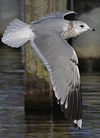 Mew Gull canus 2CY, Gull canus 2CY, October - December 2016, Grou, the Netherlands. Black in the tail.
Mew Gull canus 2CY, Gull canus 2CY, October - December 2016, Grou, the Netherlands. Black in the tail.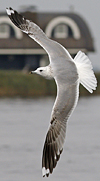 Mew Gull canus 2CY, October 22-23 2016, Grou, the Netherlands. White-headed.
Mew Gull canus 2CY, October 22-23 2016, Grou, the Netherlands. White-headed. Mew Gull canus 2CY, October 23 2016, Grou, the Netherlands.
Mew Gull canus 2CY, October 23 2016, Grou, the Netherlands.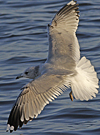 Mew Gull canus 2CY, October 19-23 2016, Grou, the Netherlands.
Mew Gull canus 2CY, October 19-23 2016, Grou, the Netherlands. Mew Gull canus 2CY, October 21-23 2016, Grou, the Netherlands.
Mew Gull canus 2CY, October 21-23 2016, Grou, the Netherlands. Mew Gull canus 2CY, October 19-21 2016, Grou, the Netherlands.
Mew Gull canus 2CY, October 19-21 2016, Grou, the Netherlands. Mew Gull canus 2CY, October 19-23 2016, Grou, the Netherlands.
Mew Gull canus 2CY, October 19-23 2016, Grou, the Netherlands. Mew Gull canus 2CY, October 22 2016, Grou, the Netherlands.
Mew Gull canus 2CY, October 22 2016, Grou, the Netherlands. Mew Gull canus 2CY, October 22 2016, Grou, the Netherlands.
Mew Gull canus 2CY, October 22 2016, Grou, the Netherlands. Mew Gull canus 2CY, October 22 2016, Grou, the Netherlands. Maybe 3CY?
Mew Gull canus 2CY, October 22 2016, Grou, the Netherlands. Maybe 3CY? Mew Gull canus 2CY, October 21 2016, Grou, the Netherlands.
Mew Gull canus 2CY, October 21 2016, Grou, the Netherlands. Mew Gull canus 2CY, October 21 2016, Grou, the Netherlands.
Mew Gull canus 2CY, October 21 2016, Grou, the Netherlands. Mew Gull canus 2CY, October 22 2016, Grou, the Netherlands. Maybe 3CY?
Mew Gull canus 2CY, October 22 2016, Grou, the Netherlands. Maybe 3CY? Mew Gull canus 2CY, October 23 2016, Grou, the Netherlands.
Mew Gull canus 2CY, October 23 2016, Grou, the Netherlands.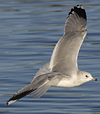 Mew Gull canus 2CY, October - December 2016, Grou, the Netherlands.
Mew Gull canus 2CY, October - December 2016, Grou, the Netherlands.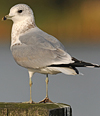 Mew Gull canus 2CY, October 08 2012, Grou, the Netherlands. Picture: Ruurd Jelle van der Leij.
Mew Gull canus 2CY, October 08 2012, Grou, the Netherlands. Picture: Ruurd Jelle van der Leij.  Mew Gull canus 2cy, October 24 2002, Etaples / Boulogne-sur-Mer, France (50.42N,1.34E).
Mew Gull canus 2cy, October 24 2002, Etaples / Boulogne-sur-Mer, France (50.42N,1.34E). 
